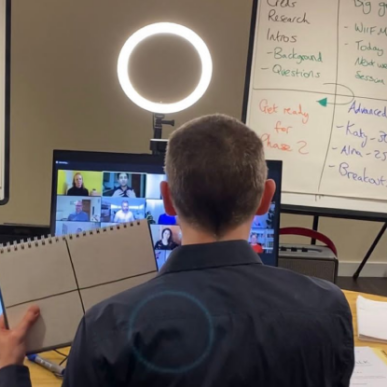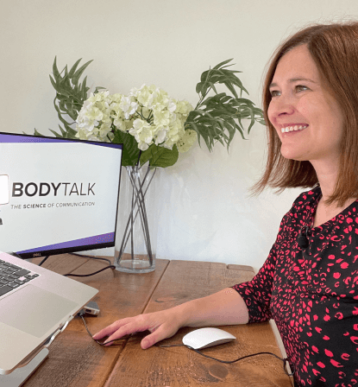“If there’s only one woman on a job shortlist, there’s statistically no chance of her being hired“
Four Ways To Build A More Gender-Inclusive Workforce
International Women’s Day is a global day of celebration marking women’s achievements and highlighting issues around gender equality.
This year’s theme is #breakthebias, encouraging people to help build an inclusive world where people are equal, irrespective of their gender.
Statistics and personal experiences tell us equality does not yet exist in the workplace, with women more likely than men to receive lower pay and less likely to hold leadership positions.
Promoting gender equality and diversity in the workplace has proven benefits, including a more productive workforce, higher turnover and, crucially, happier employees.
Here are four things that you can do to make your business more gender-inclusive.
Review your company’s gender pay gap
Since 2017, UK companies with more than 250 employees have had to publish their gender pay gap – and the data shows that women still earn less than men, despite equal pay legislation.
The average hourly pay gap varies across different industries, but in some sectors, for example, the financial sector, it’s as high as 30%.
Although the reasons behind the gender pay gap can be complex, the average woman can still expect to earn £250,000 less than their male counterpart throughout her career.
How to close the gender pay gap in your company
The UK government’s website suggests various measures businesses can take to help to close the gender pay gap. These actions include:
- Including multiple women on shortlists for jobs and promotions
According to a study by the Harvard Business Review, if there’s only one woman on a job shortlist, there’s statistically no chance of her being hired. Having two or more women on a shortlist vastly increases the likelihood of a woman being hired – even if men still outnumber women for the position.
- Using skills-based tasks and structured interviews for recruitment and promotion
Skills-based interviews will ensure that you are recruiting based on suitability for a particular role. Structured interviews mean that unfair bias is less likely to creep in and influence decisions.
- Encourage transparent conversations about pay and promotion.
Women are less likely than men to negotiate pay, especially if they are unsure how reasonable their salary expectations are. By publishing salary ranges for a job, you can help all staff understand how their salary can progress and encourage conversations during pay reviews.
In a similar vein, make sure there is a clear and transparent path for employee promotion. This will help staff understand what is required of them to progress. It will also encourage managers to make objective, evidence-based decisions around staff promotion.
- Appoint diversity managers or diversity task forces
Having a specific diversity manager or task force can help to monitor diversity across your organisation and champion women and underrepresented groups. Additionally, it ensures recruitment and promotion are carried out objectively.
Embrace flexible working
Traditionally, women hold more caring responsibilities than men when looking after children and elderly parents.
Flexible working opportunities – such as hybrid working, which has boomed in popularity since the pandemic – offer the chance for parents to juggle childcare and working hours more effectively and economically; something that will positively impact working mothers, who take the brunt of childcare.
Although attitudes are gradually changing, a 2019 study showed that almost three quarters (74%) of women are the primary caregiver for their children, compared to just over a quarter (26%) of men.
As a result, offering flexibility around working hours and locations can provide women with the freedom to continue to work whilst making your business appealing to prospective employees. One recent survey found that 52% of women would turn down a job opportunity if it did not offer flexible working benefits!
How to make flexible working work for your business
For flexible or hybrid working to succeed, measures must be taken to ensure that teams can collaborate as effectively remotely as when they are all together.
Hybrid meetings offer real opportunities for your teams to work flexibly. Make sure you take steps to prepare your staff before a meeting, give them access to the right technology and use moderators to help manage the meeting and ensure that everyone’s voice is heard. Doing this can ensure staff remain engaged, productive, and work together in a truly collaborative way.
You can learn more about hybrid meetings and how to avoid classic mistakes when running them here.
Support women in addressing the confidence gap
There is a vast confidence gap between the sexes, with women lagging well behind men in self-confidence and self-belief.
One recent study showed that women are less likely to rate their performance favourably than equally performing men. This confidence gap is detrimental to individual female performance and business success.
Providing confidence skills training can help to boost employees’ self-esteem. Mentoring schemes are one way to help encourage individuals to talk about their career goals and successes.
Training in presentation skills and body language can also positively affect how confident women feel about themselves, as well as how others perceive them.
In one of the biggest academic studies of its kind, Body Talk discovered that gender is not important when it comes to how influential a person is perceived to be, but body language does make a huge difference. Offering training opportunities in how to use body language to appear more confident may be particularly beneficial for the women and help to address the confidence gap in your business.
Ensure women’s voices are heard
A key way of making your workplace more gender-inclusive is to make sure that women’s voices are heard, particularly in team meetings.
In 2020, during a televised debate, then vice-president Mike Pence attempted to interrupt Kamala Harris’s speech no fewer than ten times. Harris held up one hand and calmly said, ‘Mr Vice-President, I’m speaking – a line which caused the future vice-president to go viral among women, who shared their personal experiences of being interrupted by men.
Statistics bear these experiences out. A 2014 study at George Washington University showed that when men talked with women, they interrupted 33% more often than when they were speaking with men.
This may come down to how men and women are socialised to communicate differently. Gender communication expert Deborah Tanner argues that men traditionally speak to determine power and achieve status, whereas women talk to determine and achieve connection. As a result, women are much less likely than men to interrupt a conversation or take the floor, as it can appear disrespectful.
How to make women’s voices heard in your business
When it comes to running meetings, take steps to ensure that everyone on your team can have their say without the threat of being interrupted.
This may mean making use of a moderator or facilitator to help take charge of the meeting and who gets to speak when – or for virtual meetings, it may mean manually muting everyone’s microphone while someone else is speaking!
Make an extra effort to encourage the women on your team to speak up. Use people’s names to help direct the conversation and ask specific questions.
Also, think about how you might allow equal time to hear people’s views, ideas or opinions. This may mean careful planning of your meeting structure in advance.
Ensuring all voices are heard will increase the flow of ideas and produce more creative and effective meetings.
Committing to equality and diversity
Employers need to support, retain and advance women and to take steps to ensure that they are not disadvantaged in their careers by their gender.
By committing to fostering a diverse work environment, businesses can really thrive. Taking steps to make a workplace truly gender-inclusive will ensure that all employees are given the space and opportunity to perform at their best, which is good for the individual and great for the business.




















